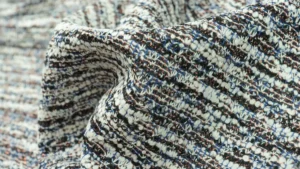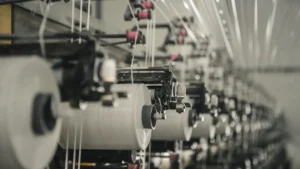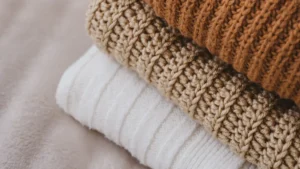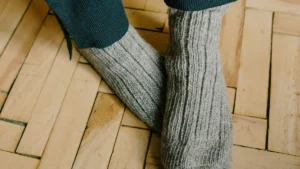
You might wonder why is cashmere so expensive compared to wool. The answer lies in its rarity, softness, and warmth. Cashmere can cost more than 100 dollars per kilogram, while wool typically costs less than 9 dollars for the same amount. This is because cashmere comes from fewer animals, with only about 20,000 to 25,000 metric tons produced worldwide each year. Wool, on the other hand, is much more abundant. When you touch cashmere, you can immediately feel how soft and warm it is. This rare fiber has a luxurious feel that wool simply doesn’t match.
Key Takeaways
Cashmere is rare and soft. It comes from special goats. These goats make only a little fiber. This makes cashmere cost more than wool.
Cashmere fibers are thinner and warmer than wool. Cashmere clothes feel lighter and softer. They also keep you warmer.
Wool is stronger than cashmere. Wool lasts longer and is good for daily use. It works well in tough weather.
You must wash cashmere by hand. Store it carefully to keep it soft. This helps it last a long time.
Pick cashmere if you want luxury and softness. Pick wool if you want something strong and easy to care for. Wool is also a better value.
Cashmere vs Wool: Origins
Cashmere Source
Cashmere comes from special goats. These goats live in cold places like northern China and Mongolia. Most cashmere comes from Inner Mongolia in China. Mongolia is the second biggest producer. Iran, Afghanistan, Turkey, Kyrgyzstan, and Kashmir make smaller amounts. The table below lists the main regions and how much they produce each year:
Region/Country | Estimated Annual Raw Cashmere Production (metric tons) | Notes |
|---|---|---|
China | 19,200 | Largest producer globally. |
Mongolia | 8,900 | Second largest producer; includes natural grey and brown cashmere. |
Afghanistan | Lesser amounts | Part of Central Asian producers. |
Iran | Lesser amounts | Part of Central Asian producers. |
Turkey | Lesser amounts | Part of Central Asian producers. |
Kyrgyzstan | Lesser amounts | Part of Central Asian producers. |
Kashmir | Limited production | Produces ultra-fine Pashmina; production limited due to political instability. |
Cashmere goats, like Yanshan and Inner Mongolia breeds, grow a soft undercoat for winter. Each goat gives less than half a kilogram of cashmere each year. You need fiber from many goats to make one sweater.
Wool Source
Wool comes from sheep. Sheep live in many countries, so wool is easy to find. Big sheep farms are in Australia, New Zealand, and the United Kingdom. Sheep give more fiber each year than goats. This makes wool more common and cheaper. Merino sheep give softer wool than regular sheep. But merino wool still feels different from cashmere.
Collection and Scarcity
People collect cashmere by gently combing goats in spring. This takes time and skill. Workers must separate the soft undercoat from rough hair. They handle goats carefully to keep fibers soft and long. Wool is collected by shearing, which is faster and easier. Because of this, cashmere is rarer and worth more than wool.
Did you know? Cashmere is about three times warmer than sheep wool, even though it feels lighter.
The chart below shows China and Mongolia make most of the world’s cashmere:

Alpaca wool also comes from a rare animal, like cashmere. But cashmere is the hardest to find. This is why cashmere costs more than wool. If you want something special, cashmere is a great choice. Alpaca wool and cashmere are both warm and soft. But cashmere is unique because of how it is collected and where it comes from.
Difference Between Cashmere and Wool

Softness and Texture
When you touch cashmere, it feels very soft. Many people like cashmere coats and sweaters for this reason. The main difference between cashmere and wool is in the fibers. Cashmere fibers are much thinner than wool fibers. Most cashmere is between 14 and 19 microns wide. Merino wool, which is soft, is about 18 to 24 microns wide. If the micron number is smaller, the fiber feels softer on your skin.
Fiber Type | |
|---|---|
Cashmere | 14 – 19 (often < 18.5) |
Average Merino | ~21.5 |
Fine Merino | 18.6 – 19.5 |
Superfine Merino | 15 – 18.5 |
Ultrafine Merino | < 15 |
Cashmere is the softest fiber in the chart. Its fine texture feels smooth and silky. Wool from sheep feels rougher and can itch. Even Merino wool, which is softer than regular wool, is not as comfy as cashmere. If you want the softest clothes, cashmere is the best choice.

Tip: For a sweater that feels gentle on your skin, pick one with a lower micron count. Cashmere gives you the most comfort.
Warmth and Insulation
You might think thick coats are warmer, but that is not always true. Cashmere coats keep you warmer than wool coats, even though they are lighter. Cashmere traps more air inside the fibers. This helps hold in your body heat. Cashmere is about eight times warmer than regular wool, even Merino wool.
Category | Cashmere | Merino Wool |
|---|---|---|
Fiber Diameter | 14-19 microns (finer, softer) | 18-24 microns (less fine) |
Warmth | Approximately 8x warmer than wool | Warm, but less than cashmere |
Weight | Lighter, high warmth-to-weight | Lightweight, heavier than cashmere |
Durability | More delicate, prone to pilling | Stronger, more durable |
Cashmere is great for cold weather because it keeps you warm without being heavy. Wool also keeps you warm and can soak up water but still feel dry. Wool coats are good for daily use if you need something strong.
Weight and Feel
When you pick up a cashmere sweater, it feels light. Cashmere fibers are finer and lighter than wool fibers. Both cashmere and wool fabrics are usually 200-300 grams per square meter. But cashmere clothes feel lighter because the fibers are finer. This makes cashmere coats feel soft and airy.
Wool fabrics are thicker and feel heavier on your body. If you want a coat that feels almost weightless but keeps you warm, choose cashmere. Wool feels solid and cozy, which some people like for outdoor use or cold places.
Note: Light cashmere coats keep you warm without feeling bulky. They are good for layering or travel.
Durability
Durability is another big difference between cashmere and wool. Wool, especially Merino wool, is strong and lasts a long time. Wool coats can handle rough use and last for years. Wool does not pill much and keeps its shape after many washes.
Cashmere is soft and warm but more delicate. Cashmere clothes can pill, especially when new, as short fibers come off. High-quality cashmere, like four-ply cashmere, lasts longer and pills less. You need to treat cashmere gently to keep it nice. Washing too much or rough use can make cashmere weak.
If you want a coat for daily use, wool is better. If you want something soft and fancy, and you will take care of it, cashmere is best.
Remember: Both cashmere and wool can last a long time if you buy good quality and care for them.
Quick Comparison Table
Feature | Cashmere | Wool (Merino) |
|---|---|---|
Softness | Ultra-soft, silky | Soft (Merino), coarser |
Warmth | Superior, 8x warmer | Warm, less than cashmere |
Weight | Lighter, airy feel | Heavier, denser |
Durability | Delicate, needs care | Strong, resists pilling |
If you compare alpaca wool and cashmere, both are soft and warm. But cashmere is softer and feels more special. The choice between cashmere and wool depends on what you want most: comfort, warmth, weight, or strength. Merino wool is soft and strong, but cashmere is the best for luxury and warmth.
Why Is Cashmere So Expensive

Rarity and Labor
Cashmere costs a lot because it is rare. It comes from special goats that live in cold places. Each goat gives only a little soft undercoat every year. You need fiber from many goats to make one sweater. This makes cashmere hard to find.
Getting cashmere takes a lot of work. Workers gently comb the goats by hand to get the soft undercoat. This careful work keeps the fibers long and soft. Labor costs add up fast. In China, making one cashmere sweater costs about $13.53 just for labor. In small Los Angeles factories, sewing can cost $22 per piece. These costs show why cashmere clothes are not cheap. Wool is easier and faster to collect, so it costs less.
When you buy cashmere, you pay for the time, skill, and care. This is a big reason why cashmere is so expensive.
Fiber Quality and Grades
Not all cashmere is the same. The fiber quality changes how it feels, how long it lasts, and the price. Cashmere comes in different grades. Grades depend on fiber length, softness, and purity. Longer and finer fibers make the fabric softer and stronger. They also pill less.
Here is a table that shows how cashmere grades affect quality and price:
Grade | Fiber Length | Purity/Impurities | Quality Characteristics | Price Impact |
|---|---|---|---|---|
Grade A | At least 30mm | Minimal impurities | Long, fine fibers; very soft, luxurious, durable; less pilling | Highest price due to superior quality and longevity |
Grades B & C | Less than 30mm | More imperfections | Shorter fibers; less soft and durable; more prone to pilling | Lower price; less luxury and durability |
Grade A cashmere feels soft and lasts longer. Lower grades cost less but are not as comfy or strong. This difference helps explain why cashmere is so expensive.
Price Factors
Many things change the price of cashmere. Some sweaters cost much more than others. Here are the main reasons why cashmere is so expensive:
The fiber is rare and hard to collect.
Higher grades with longer, purer fibers cost more.
White cashmere is easier to dye and often costs more.
Famous brands charge more for their luxury fabric.
Shopping online lets brands reach more people and sometimes lower costs. Social media and influencers can make some cashmere more popular, raising prices.
New technology helps brands sell cashmere in new ways, which can change prices.
The COVID-19 pandemic made more people shop online for luxury items like cashmere. This changed how brands set prices.
Fast shipping and easy returns make it simple to buy cashmere from anywhere. This can also change the price.
Tip: For the best value, pick Grade A cashmere from trusted brands. You will pay more, but you get a soft, long-lasting luxury fabric.
When you ask why cashmere is so expensive, remember you pay for rarity, quality, and the special feeling of wearing something truly nice.
Wool vs Cashmere: Care
Caring for Cashmere
When you care for cashmere, you need to treat it gently. Always hand-wash your cashmere in cold water. Use a detergent made for cashmere or delicate fabrics. Soak your sweater for no more than ten minutes. Gently squeeze out water, but never wring or twist the fabric. Lay your cashmere flat on a towel to dry. Keep it away from heat and sunlight. If you see pilling, use a cashmere comb to remove it softly. For storage, fold your cashmere and place it in a cotton bag with cedar or lavender sachets. This keeps moths away and protects the fibers.
Tip: Never hang cashmere sweaters. Hanging can stretch and ruin their shape.
Caring for Wool
Wool is also delicate, but it can handle a bit more than cashmere. You should check the label before washing. Some wool items need dry cleaning, while others allow hand-washing. Use cold water and a wool-safe detergent. Wash your wool sweater inside out to reduce friction. Gently squeeze out water and lay it flat to dry. Reshape the sweater while it is damp. Store wool folded in a breathable bag with moth repellents like cedar blocks.
Here is a quick care comparison:
Care Aspect | Wool Recommendations | Cashmere Recommendations |
|---|---|---|
Washing | Hand-wash or dry clean; wool detergent; cold water | Always hand-wash; cashmere detergent; cold water |
Drying | Lay flat; reshape; avoid sunlight | Lay flat on towel; air dry; avoid heat |
Pilling Removal | Fabric comb or sweater shaver | Cashmere comb; avoid friction |
Storage | Fold; breathable bag; cedar or lavender sachets | Fold; cotton bag; moth repellents; cool, dry place |
Longevity and Maintenance
Wool vs cashmere care makes a big difference in how long your clothes last. Both fibers can lose shape if you wash or store them wrong. Cashmere is more delicate and can shrink or stretch easily. You need to wash it less often and always handle it with care. Wool can be reshaped if it gets stretched, but it still needs gentle washing and drying. Both wool and cashmere attract moths, so always store them clean and use natural repellents.
Note: If you want your wool vs cashmere sweaters to last for years, follow these care steps every season.
Wool vs cashmere care is not hard, but it does take attention. When you treat your sweaters well, you keep them soft, warm, and beautiful for a long time.
Choosing Cashmere or Wool
When to Choose Cashmere
Pick cashmere if you want the softest, most fancy coat. Cashmere feels smooth and gentle on your skin. It keeps you warm but does not feel heavy. Many people buy cashmere for its style and special look. Some people like cashmere because it shows status. Young adults and rich people often choose cashmere for its luxury. If you care about animals and the planet, some cashmere coats are made in a kind way.
Cashmere coats are great for special events or when you want to look unique. They give you soft comfort, light warmth, and a classic style. Good cashmere coats last a long time and get even softer as you wear them.
Tip: Cashmere coats are warm but not bulky. You can wear them in many seasons and layer them easily.
When to Choose Wool
Choose wool if you need a strong and useful coat. Wool is good for daily use, outdoor fun, or cold weather. Wool costs less than cashmere and is easier to take care of. If you want a coat that can handle rough days and still look nice, wool is a smart pick.
Wool is also better if you move a lot or spend time outside. It works well for sports and tough weather. Wool comes in many styles, from thick sweaters to lighter layers.
Matching to Your Needs
Think about your life, weather, and money before you pick. Wool coats are best for cold places and last a long time. Cashmere is better if you want something light and stylish for mild weather.
Here is a quick guide to help you choose:
Your Priority | Best Choice | Why |
|---|---|---|
Luxury and softness | Cashmere coats | Feels soft, warm, and looks classic |
Durability and value | Wool coats | Strong, costs less, and easy to care for |
Ethical production | Cashmere coats | Some brands use kind and green ways to make them |
Everyday use | Wool coats | Good for daily wear and outdoor fun |
Special occasions | Cashmere coats | Makes you stand out and look fancy |
Cashmere is a good buy if you want comfort, style, and something that lasts. Picking wool or cashmere is not just about the price. It depends on what you need and how you want to look. Both are good in their own way, so choose what fits your life and makes you happy.
You now know the main differences between these two fabrics. Softness, warmth, and care needs set them apart. Experts suggest you look for Super 120 to Super 150 wool for a balance of comfort and strength. Use this table to help you decide:
Reason | Softness & Comfort | Durability | Price |
|---|---|---|---|
Cashmere | Very high | Lower | High |
Wool | Moderate | Higher | Lower |
Choose what fits your style, budget, and comfort needs best.
FAQ
What makes cashmere more expensive than wool?
You pay more for cashmere because it is rare and hard to collect. Each goat gives only a small amount of fiber each year. Workers must comb the goats by hand. This careful process takes time and skill.
How can you tell if a sweater is real cashmere?
Check the label for 100% cashmere. Feel the fabric. Real cashmere feels very soft and light. You can gently stretch the sweater. High-quality cashmere returns to its shape. If you see pilling, use a cashmere comb.
Is cashmere warmer than wool?
Yes, cashmere keeps you warmer than wool. Cashmere fibers trap more air, which holds in your body heat. You stay warm without heavy layers. This makes cashmere a good choice for cold weather.
How does cashmere compare to silk?
Cashmere feels soft and warm. Silk feels smooth and cool. When you compare silk vs cashmere, you find that silk shines more and works well in warm weather. Cashmere gives you more warmth for winter.
Can you wash cashmere at home?
You can wash cashmere by hand in cold water. Use a gentle detergent. Do not wring or twist the fabric. Lay it flat to dry. Never hang cashmere sweaters, as they can lose their shape.









